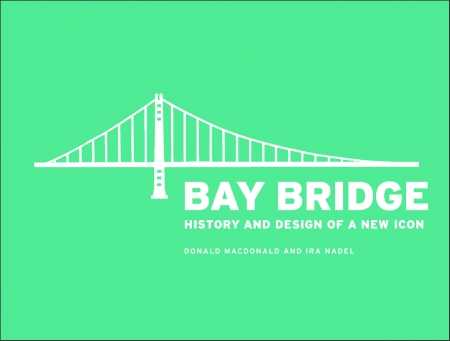
Bay Bridge
History and Design of a New Icon
Bay Bridge architect uses his intimate knowledge to detail the technical, political, and geographical hurdles involved in construction of the historic span.
Author and illustrator Donald MacDonald evokes all the mythic splendor and danger of the “Titan of Bridges” in his book, Bay Bridge: History and Design of a New Icon. As the architect of the new eastern span of the bridge, MacDonald brings intimate knowledge of the technical, political, and geological hurdles involved in its construction. Experts will delight at the technical language describing the bridge as the first “mono-cable, deck-anchored, vehicular-carrying suspension bridge in the world.” And the average reader will recognize the significance of its status as the “world’s longest single-tower suspension bridge.” He also provides history of the the original 1930s construction of the bridge, when twenty-seven men died, “some falling into the concrete as it was being poured,” and, more horrifying, that “work could not stop to extricate them.”
The book can be used as a companion text in architecture, urban planning, design, engineering, or preservation courses. It can also serve as an important case study for the complex web of stakeholders in large public works projects. At the least, the book is an excellent study of the history of California’s innovative approach to transportation for its ever-burgeoning population.
Discussion of a major transportation corridor through Northern California, anchored in bay mud, wouldn’t be complete without mention of earthquakes. MacDonald provides a thorough discussion of the 1989 Loma Prieta earthquake, which damaged the bridge—and people’s confidence. In typical California fashion, utility outweighed environmental threat. Despite the US Geological Survey assigning a 70 percent chance of another major earthquake striking the Bay Area in the next thirty years, reconstruction of the bridge was deemed a must.
While MacDonald’s illustrations are colorful and instructive, including numerical figure references and captions, readers may yearn for archival and modern photographs of the iconic bridge and its evolutions. Appendices of facts and figures for the original and new Bay Bridge, a page of references, and the index make this compact book an important and concise tool for professionals in the field.
Reviewed by
Kai White
Disclosure: This article is not an endorsement, but a review. The publisher of this book provided free copies of the book to have their book reviewed by a professional reviewer. No fee was paid by the publisher for this review. Foreword Reviews only recommends books that we love. Foreword Magazine, Inc. is disclosing this in accordance with the Federal Trade Commission’s 16 CFR, Part 255.
